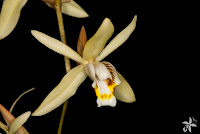Planning to buy a perfume but there is so much selection,
starting from their different category of names which includes -EDP, EDT or body
mist etc. Do you know what does it stand for?
While, I will say they are just fanciful names to categorised
the concentration of fragrances oil in the perfume. The most common type you
will find in Singapore will be EDP and EDT. EDP have a higher concentration on
oil around 15-20% while an EDT only have 5-15%. Therefore, if the price between
both is not more than $10 and the concentration is double, you are better of
buying an EDP as it has more fragrance oil which will last longer!
As you can see from the above, you will realise that deodorant
or body mist have less than 5% of fragrance oil in it so you are basically spending
your money buying their packaging. With this new knowledge, it will be easier
to pick a perfume off the shelves now.
Try our Scent-osa workshop at Imbiah Lookout. or pefume team bonding. Worried about what it is goign to be? Why not take a personality test first? Click for female and male personaity test . For results click here
Try our Scent-osa workshop at Imbiah Lookout. or pefume team bonding. Worried about what it is goign to be? Why not take a personality test first? Click for female and male personaity test . For results click here
Nonetheless, we will still be discovering more therapeutic
orchids which are often being overlooked in today world – where orchids are
just being use for decoration or as an ingredient for perfume.
Coelogyne barbata Lindl. ex Griff.
Other name: Xuchunbeimu Lan, Ranmaobeimu Lan
Chinese medicinal name: Fengian
This plant is being harvested for use all round the year,
regardless of season. It needs to be washed and sun-dried before use. It is
sweet in nature and have cooling ability thus often being used in TCM to tackle
“heaty” boy, relieve thirst, cough and pain.
Coelogyne corymbosa Lindl.
Chinese name: Yanbanbeimu Lan, Beimu Lan, Zhixueguo;
Shibajiao
Chinese medicinal name: Beimu Lan; Guoshangye
Newari name: Tuyu kenbu swan
Similarly, this plant can be harvest all year round. The
entire plant can be used to treat soft tissues injuries or bone fracture. Moreover,
it can also help reduce coughs, heat and flu.
Coelogyne cristata Lindl.
Chinese name: Beimu Lan
Indian name: Hadjojen
Nepali names: ban maiser, jhyanpate in Chepang dialect;
chandi gabha (Nepali), syabal (Tamang)
This orchid is commonly used to treat animals with fractured
bones or wounds in Himalaya. While the local in Myanmar and Nepal use it as a
remedy for diarrhoea or constipation. In addition, the fresh paste from the
flower can be consumed to help relieve headaches and fever.
Coelogyne flaccida Lindl.
Chinese names: Lilinbeimu Lan, Guishangye
Chinese medicinal name: Jidatui
Nepali name: Thur gava
This plant/herb is very well-liked by the tribes in China as
it is used to clear heat, promote body fluids thus counter the dryness in one
body and stop coughs. Similar to the previous plant, this is also being use in
Nepal to treat headache and indigestion.
Coelogyne fuscescens Lindl.
Chinese name: Hechunbeimu Lan
Thai names: Sing to, phaya rat, phao hin
In Thailand, the stem is
being used to treat burns, whereas in Nepal, it is use to reduce abdominal
pain.
Coelogyne leucantha W.W. Sm.
Chinese name: Baihuabeimu Lan
This plant has the properties to lessen heat, reduce coughs
and pain while improving blood flow in the body. Furthermore, it can repair
torn tendons!
Coelogyne nitida (Wall ex D. Don) Lindl.
Chinese name: Mijingbeimu Lan
Nepali names: Silver Orchid in English, bhyanpat(Chepang), Salida,
Sanit (Gurung),
Chandi gabha, para phul (Nepali)
In Nepal, the juice of the pseudobulb is recommended for
stomach ache.
Coelogyne stricta (D. Don) Schltr
Indian name: Harjojan
In India, the plant is widely use to heal bone by applying
externally onto fractured bones. While in Nepal, they continue to use this
plant externally to relieve headache and fever.
Photo credits: Amazon.in, Wikimedia, Wikipedia, OrchidRoots,
Pinterest, Flickr.









Comments
Post a Comment